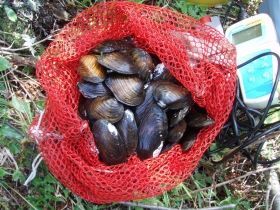Times are tough for 31 of Michigan’s 45 varieties of freshwater mussels. Sporting evocative names like wavy-rayed lampmussel and round pigtoe, these residents of the state’s rivers are imperiled by habitat disruption and pollution and are also threatened by climate change.
Michigan State University (MSU) scientists’ recommendation to figure out the best places to focus conservation efforts: Worry about fish.
In this month’s journal Hydrobiologia, researchers say that if you care about those wavy-rayed lampmussels and round pigtoes, then you also must care about Michigan’s johnny darters and rosyfaced shiners.
This research group for the first time creates models that acknowledge how tightly the fate of mussels and fish are entwined in the state’s ecosystems, and helps chart a path for conservation managers to save the mussels. Mussels filter water – a single one can clean up 20-30 gallons a day – as they eat, and excrete nutrients upon which other water organisms can feast. Their shells are important terrain for algae and insect larvae to attach, and mussels are an important food source for some aquatic critters.
Read more at Michigan State University
Image: Michigan's mussel populations are threatened by changing climate and land uses. Michigan State University researchers now have learned that their fish hosts also must be considered when devising conservation strategies. (Credit: Pete Badra, Michigan State University)


